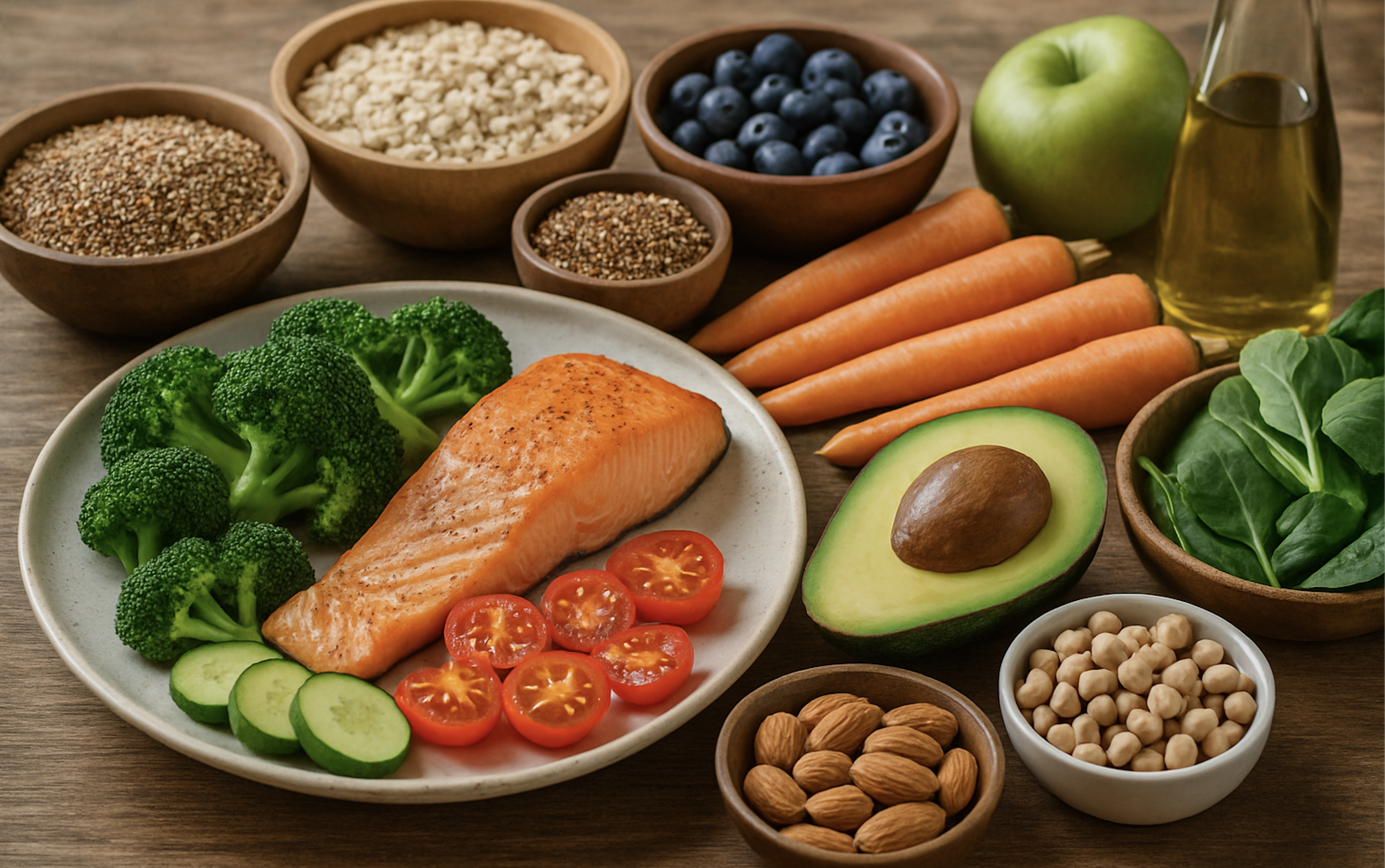Clean Eating Starter Guide: How to Eat Better, Feel Better, and Live Better
A simple approach to health through whole, minimally processed foods

In a world of fast food, processed snacks, and confusing diet trends, clean eating offers a refreshingly simple approach to health: Eat whole, minimally processed foods as close to their natural state as possible.
But what does that actually mean? If you're new to clean eating, this guide will walk you through the basics, the benefits, and how to get started—without feeling overwhelmed.
What Is Clean Eating?
Clean eating isn't a diet. It's a lifestyle rooted in the idea that real food = real fuel. It's about focusing on nutrient-dense, whole foods and cutting out artificial ingredients and heavily processed items.
Clean eating means:
- Choosing whole foods (fruits, veggies, whole grains, lean proteins)
- Avoiding refined sugars, additives, preservatives, and artificial flavors
- Eating balanced meals that support energy, digestion, and overall health
- Staying hydrated with water and natural drinks like herbal teas
It's not about perfection—it's about progress.
Why Clean Eating Matters
The benefits of clean eating go far beyond your plate. When you fuel your body with clean, nutrient-rich food, you may experience:
- ✅More energy and mental clarity
- ✅Improved digestion and gut health
- ✅Better skin, hair, and nails
- ✅Balanced blood sugar and fewer cravings
- ✅Weight management (without restriction)
- ✅A stronger immune system
Clean Eating 101: What to Eat (and What to Avoid)
✅ Foods to Eat More Of:
- Vegetables (fresh or frozen, especially leafy greens)
- Fruits (whole fruits, not juices)
- Whole grains (quinoa, brown rice, oats)
- Lean proteins (chicken, turkey, fish, tofu, legumes)
- Healthy fats (avocados, olive oil, nuts, seeds)
- Natural sweeteners (honey, maple syrup in moderation)
- Water, herbal teas, fresh juices
❌ Foods to Minimize or Avoid:
- Packaged snacks with long ingredient lists
- Refined sugars and flours
- Soda and sugary drinks
- Fried and fast food
- Artificial sweeteners and preservatives
- Processed meats (hot dogs, deli meats)
Simple Tips to Start Clean Eating Today
Read Labels
If you don't recognize the ingredients, your body won't either.
Shop the Perimeter
The outer edges of grocery stores usually house the fresh produce, meats, and dairy.
Cook More at Home
Control what's going into your meals by making them yourself.
Plan Ahead
Meal prep helps prevent impulsive eating and keeps you on track.
Crowd Out, Don't Cut Out
Instead of obsessing over what to avoid, focus on adding more whole, healthy foods to your meals.
Hydrate Often
Start each day with a glass of water and carry a reusable bottle to stay hydrated.
What Clean Eating Is NOT
Let's bust some myths:
- 🚫It's not about being 100% organic
- 🚫It's not a cleanse or a detox
- 🚫It's not about restriction or guilt
- 🚫It's not a one-size-fits-all plan
Clean eating is flexible, personal, and meant to fit your lifestyle—not the other way around.
Sample Clean Eating Day
- Breakfast: Overnight oats with chia seeds, almond milk, berries, and a drizzle of honey
- Snack: Apple slices with almond butter
- Lunch: Grilled chicken salad with olive oil and lemon dressing
- Snack: Hummus with cucumber and carrot sticks
- Dinner: Quinoa, roasted veggies, and baked salmon
Final Thoughts: Progress Over Perfection
Clean eating isn't about being perfect—it's about being more mindful of what you put in your body. Start small. Swap soda for water. Add a veggie to every meal. Cook more, eat out less. Over time, these small shifts will lead to big changes in how you feel, function, and flourish.
Ready to Transform Your Eating Habits?
Join TraceWell to monitor your water, uncover hidden contaminants, and get smarter health recommendations - so you can make safer choices every day.
Sign Up for Free